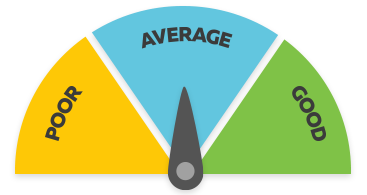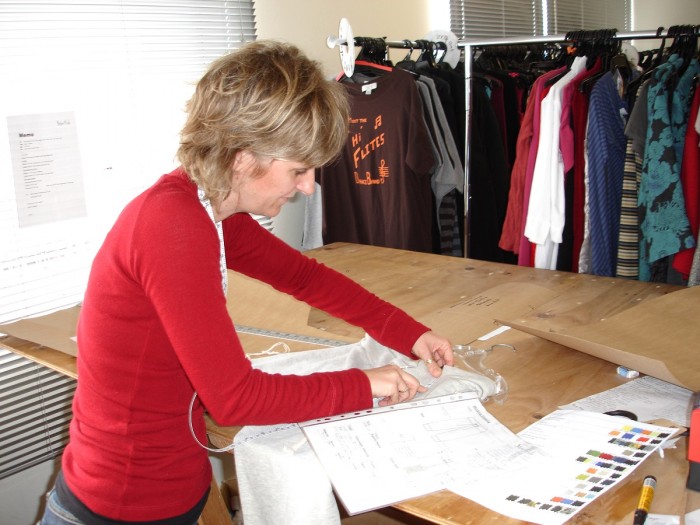Patternmaker
Ringa Tauira Kākahu
Alternative titles for this job
Patternmakers turn clothing designs into patterns.
Pay
Patternmakers usually earn
$24-$36 per hour
Source: NZ Fashion Tech and Competenz, 2017.
Job opportunities
Pay
Pay for patternmakers varies depending on experience.
- New patternmakers usually earn between minimum wage and a little more.
- Mid-level patternmakers can earn between $24 and $25 an hour.
- Senior patternmakers with more than 10 years' experience can earn up to $36 an hour.
Source: New Zealand Fashion Tech and Competenz, 2017.
- PAYE.net.nz website - use this calculator to convert pay and salary information
- Employment New Zealand - information about minimum pay rates
(This information is a guide only. Find out more about the sources of our pay information)
What you will do
Patternmakers may do some or all of the following:
- create pattern pieces by hand or on computer
- cut out the pattern by hand or print out a copy using a computer
- write garment-sewing instructions
- help with fitting sample garments
- adapt patterns for different sizes (grading).
Skills and knowledge
Clothing pattern makers need to have knowledge of:
- patternmaking, and sewing codes and symbols
- different sewing equipment and methods
- different fabrics and textiles
- body shapes
- fashion design techniques
- computer-aided design (CAD) software.
Working conditions
Patternmakers:
- usually work regular business hours
- work in factories and workrooms
- work in conditions that can be noisy.
What's the job really like?

Sonya Whitticase
Patternmaker
Any advice for aspiring patternmakers?
"You need to find what excites you about fashion. You need that passion because fashion's a very hard industry to be in. I've tried to walk away from it but I can't. Fashion has got into my bloodstream, and now I'm a bit of an adrenaline junkie and I enjoy the buzz of fashion."
What's the main role of a patternmaker?
"Knowing and understanding what the designer is trying to do is huge because you're trying to interpret a flat drawing. Just because I'm right for this company and this designer doesn't mean I'd be right for another designer. You've got to have that rapport or it won't work.
"You're also always thinking about the best way to put a garment together from a construction point of view, and how it will work when the garment goes into production."
What's the most satisfying part?
"For me, the ultimate buzz is when we get the garments made and they're out in the stores and people start ringing and saying 'Hey it fits beautifully, it looks beautiful, and I want more.'"
Entry requirements
To become a patternmaker you need to have a New Zealand Diploma in Fashion Technology (Level 5) or equivalent. You can learn to become a patternmaker through a course or through a Competenz apprenticeship.
- Eastern Institute of Technology (EIT) website - information on the Diploma in Fashion Technology
- Whitecliffe College of Art and Design - information on qualifications including the Diploma in Apparel and Fashion Technology
- Southern Institute of Technology - information on the Graduate Diploma in Fashion (Design and Technology)
- More information about apprenticeships
Secondary education
A minimum of three years of secondary education is recommended. Useful subjects include design and visual communication (graphics), digital technologies, maths and processing technologies.
Personal requirements
Patternmakers need to be:
- patient
- quick and neat
- accurate, with an eye for detail
- able to follow instructions
- able to work well under pressure
- good at maths so they can measure and make calculations
- good problem-solvers.
Useful experience
Useful experience for patternmakers includes:
- community or night courses in dressmaking
- dressmaking or tailoring
- drawing or design work
- work in a clothing factory or workroom.
Physical requirements
Patternmakers need to have good eyesight (with or without corrective lenses), normal colour vision, good hand-eye co-ordination and steady hands. You also need to be comfortable standing for long periods.
Find out more about training
- Competenz
- 0800 526 1800 - info@competenz.org.nz - www.competenz.org.nz
- Eastern Institute of Technology(EIT)
- 0800 22 55 348 - www.eit.ac.nz
- Whitecliffe College of Art and Design
- 0800 800 300 - admissions@whitecliffe.ac.nz - www.whitecliffe.ac.nz
- Southern Institute of Technology(SIT)
- 0800 86 78 839 - info@sit.ac.nz - www.sit.ac.nz
Check out related courses
What are the chances of getting a job?
Patternmaker job numbers falling
The number of patternmakers has dropped by 50% since 2007, and this trend is expected to continue. This is due to:
- increasing use of computerised patternmaking machines
- New Zealand businesses using overseas patternmakers to save on costs.
Although the number of patternmakers is falling, not enough people are training in this area. This means that when patternmakers leave the industry, employers find it difficult to replace them.
According to the Census, 78 patternmakers worked in New Zealand in 2018.
Chances best for qualified patternmakers
Most employers prefer to take on patternmakers with tertiary training. However, some employers will train people working in other areas of the industry, such as sewing machinists, if they show initiative and ability.
Most patternmaker jobs not advertised
If you are interested in getting work as a patternmaker, it's best to approach companies yourself, as over half of new positions in the industry are not advertised.
Types of employers varied
Patternmakers may work for:
- small fashion houses
- large clothing manufacturers
- fashion retailers
- tailors and dressmakers.
Many pattern makers are self-employed, contracting their services out to a range of clients.
Sources
- Edmunds, S, 'New Zealand Designers Carve Out Niche to Take on Fast Fashion', 16 April 2017, (www.stuff.co.nz).
- Marshall-Smith, V, academic director, NZ Institute of Fashion Technology Ltd, Careers Directorate – Tertiary Education Commission interview, November 2017.
- Ministry of Business, Innovation and Employment, 'Occupation Outlook – Tailors and Patternmakers', accessed October 2017, (www.mbie.govt.nz).
- New Zealand Apparel, 'Is NZ-Made Dead?', 2 August 2017, (www.apparelmagazine.co.nz).
- NZ Fashion Tech, 'Changing Times', accessed October 2017, (www.nzfashiontech.ac.nz).
- NZ Fashion Tech, 'Gaining Employment', accessed October 2017, (www.nzfashiontech.ac.nz).
- NZ Fashion Tech, 'Industry Opportunities', accessed October 2017, (www.nzfashiontech.ac.nz).
- Ryan, H, 'Fashion Industry's Moment to Shine', NZ Herald, 26 August 2017, (www.nzherald.co.nz).
- Stats NZ, '2018 Census Data', 2019.
(This information is a guide only. Find out more about the sources of our job opportunities information)
Progression and specialisations
With further training, patternmakers may become senior patternmakers, product developers or clothing designers. They may also become self-employed.
Patternmakers can specialise in a number of roles, including:
- Marker Maker
- Marker makers transfer graded patterns to thick paper, with sewing codes.
- Pattern Grader
- Pattern graders put patterns into a range of sizes.
Last updated 28 March 2025


